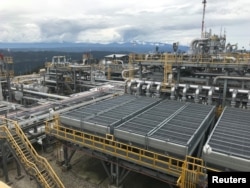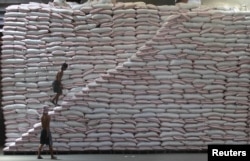The Philippines, usually a receiver of international aid, got a unique chance this week to give some as the government agreed to help struggling Papua New Guinea with rice cultivation.
Philippine and Papua New Guinean officials signed an agreement Wednesday on cooperation in agriculture, particularly rice production, inland fish farming and industrial crops, the presidential office in Manila said.
Rice will probably lead their agreement as the Philippines has shared growing techniques abroad before, said Jonathan Ravelas, chief market strategist with Banco de Oro UniBank in Metro Manila.
“Planting rice is a bit sensitive, especially when you’re in a tropical country,” Ravelas said. “Before a harvest it rains. We have a facility that gives you different strains of rice that could be water resistant or whatever.”
Receiver of foreign aid
The Philippines as a developing country has accepted billions of dollars in aid and investment pledged by other countries.
Much of it comes from China, Japan and the United States. For example, China is helping build railways now as part of a $169 billion plan to build Philippine infrastructure through 2022. Two years ago Beijing pledged an eventual total of $24 billion in aid and investment to the Philippines.
Now Papua New Guinea needs help diversifying its economy because drops in world oil prices have hurt oil and gas, said Christian de Guzman, vice president and senior credit officer with Moody’s in Singapore.
“With the downturn in oil prices, the problem here is that a few years ago there was this expectation that oil prices were going to be like $100 per barrel, and so they jacked up spending,” de Guzman said. “They’re a bit struggling right now.”
“This is part of the diversification story,” said de Guzman, referring to any boost in farming from the Philippines. “They don’t want their economy to be so tied so closely to the oil cycle.”
In 2014 Papua New Guinea began commercial operations of liquefied natural gas. Gas, crude oil and other fuels could “potentially comprise” about 60 percent of the country’s export revenues, professional services firm PwC said. The impoverished country’s GDP growth slowed from 10.5 percent to 2 percent in 2016, and the Asian Development Bank forecasts a 1.3 percent fall this year.
Papua New Guinean Prime Minister Peter O’Neill told a business forum in Australia the economy must be diversified to avoid booms and busts.
Reputation for rice
O’Neill was quoted by the Philippine presidential website saying agriculture cooperation “will help ensure food security for both countries.” He met Philippine President Rodrigo Duterte in Manila this week.
The Philippines can offer expertise in hundreds of rice strains, including some that hold up in severe weather such as typhoons, said Jaime Manolo in the development and communications section of the Philippine Rice Research Institute.
The government-funded, 33-year-old institute also called PhilRice has previously helped Brunei and countries in Africa with rice technology, he said.
“We’ve got a lot of location-specific technologies that are being promoted in different ecosystems, which I think is also true in any country that attempts to grow rice,” Manolo said. “So I guess PhilRice has the expertise and technologies that can help for instance PNG improve its rice production.”
Quid quo pro
The Philippines may get something in return for its aid to Papua New Guinea, some analysts say.
Filipinos already work in PNG, part of a labor diaspora that totals about 2.3 million people worldwide.
Just 15,500 of those were working in Papua New Guinea as of 2012, Philippine media say, but the number has been growing. Philippine technical workers may eventually be able to help Papua New Guinea advance in farming, de Guzman said.
Their earnings would contribute to billions of dollars in remittances sent back to the Philippines.
Manila may also want Papua New Guinea to scrap a rule against tuna fishing by foreign boats, said Carl Baker, director of programs with the think tank Pacific Forum CSIS in Honolulu.
Boats used to reach its waters from the southern Philippine island Mindanao and take tuna catches back for processing. Duterte asked O’Neill last year to reconsider the ban.
“The Philippine Rice Research Institute is well known in Southeast Asia and has done a lot of research on optimizing small farm production, so that makes sense for PNG,” Baker said.
“The Philippines does not really provide a lot of assistance to other countries in the region,” he added. “I suspect this really is being driven by an interest in trying to protect the interests of the tuna processors.”









